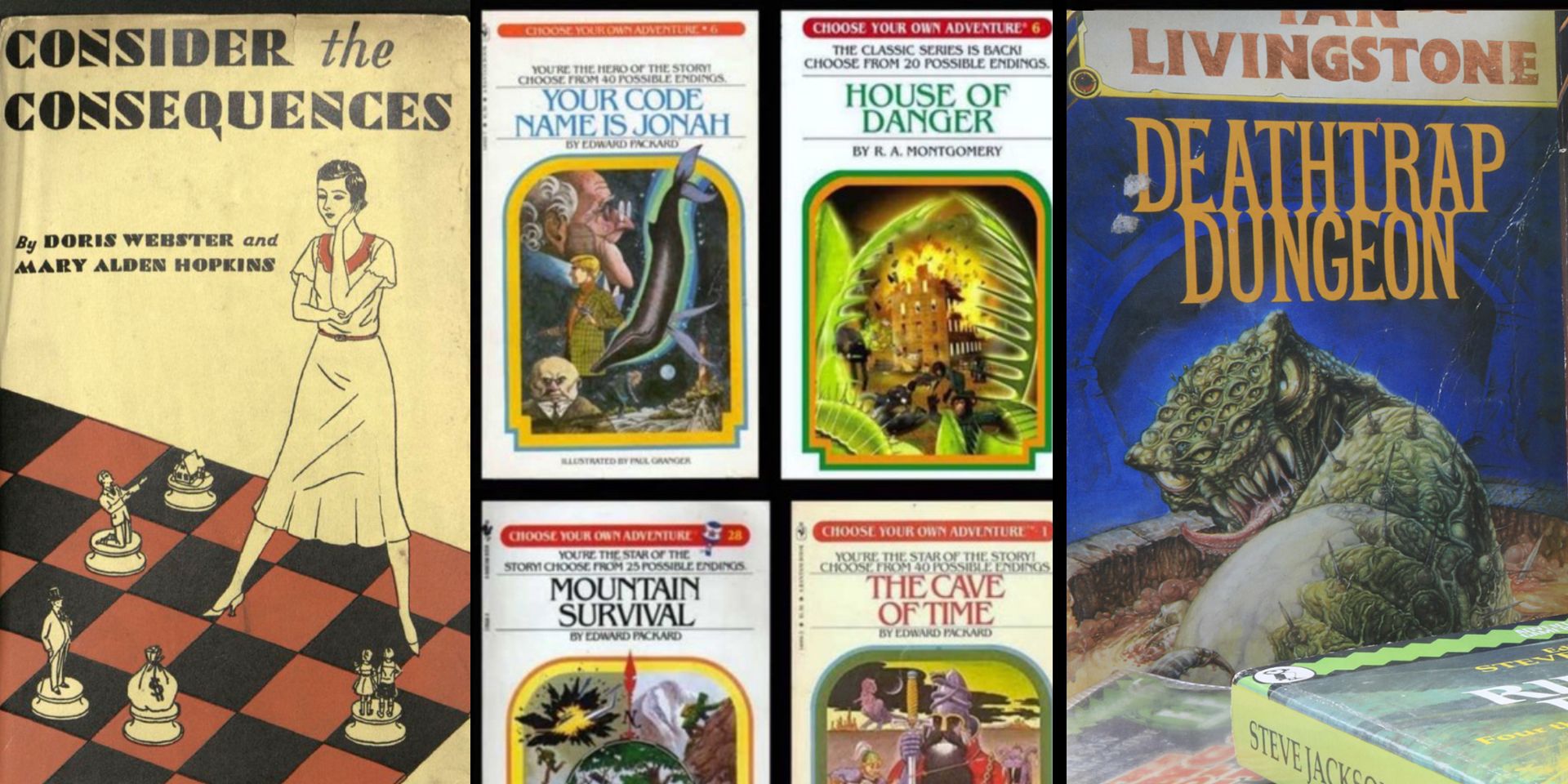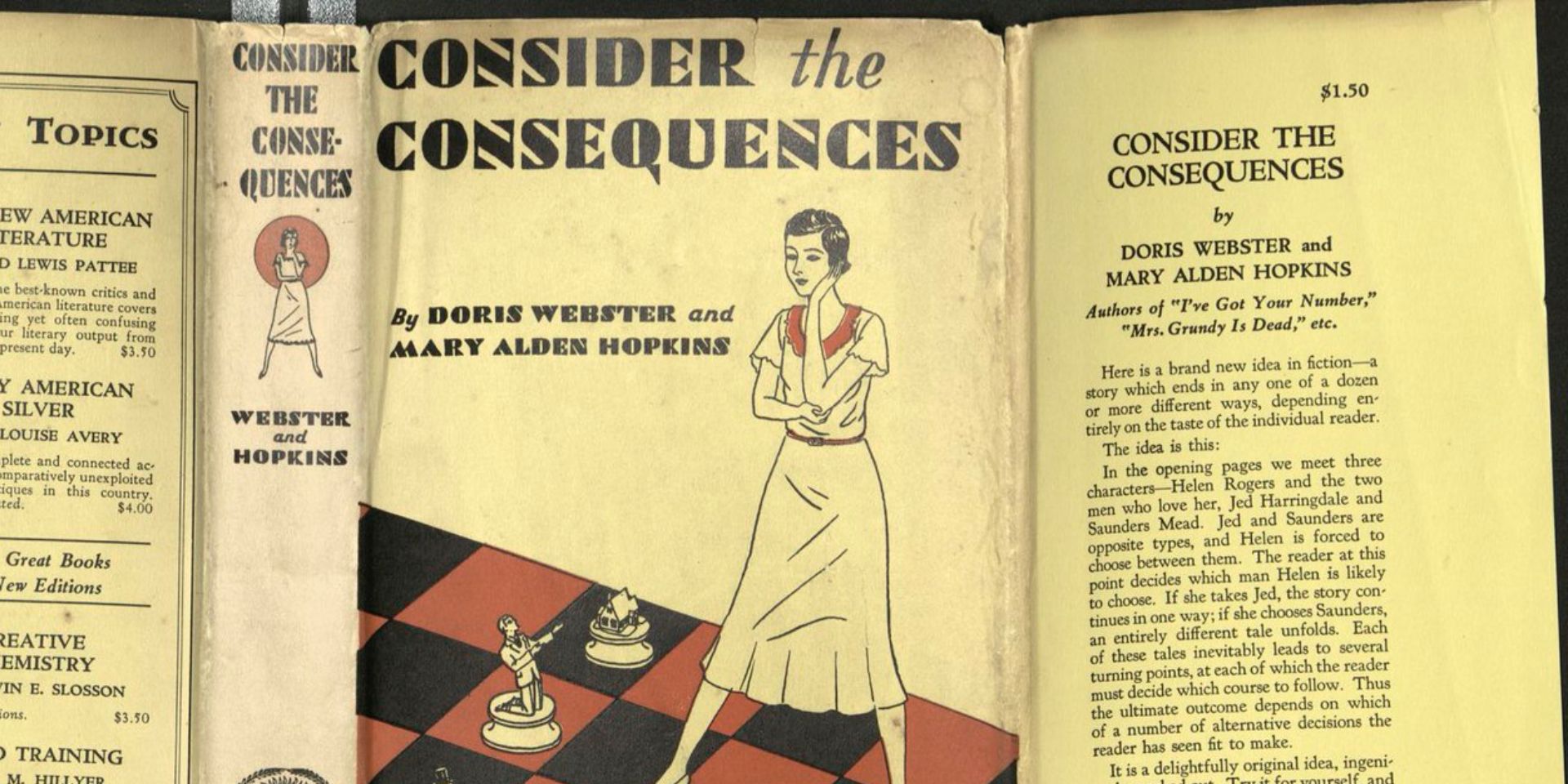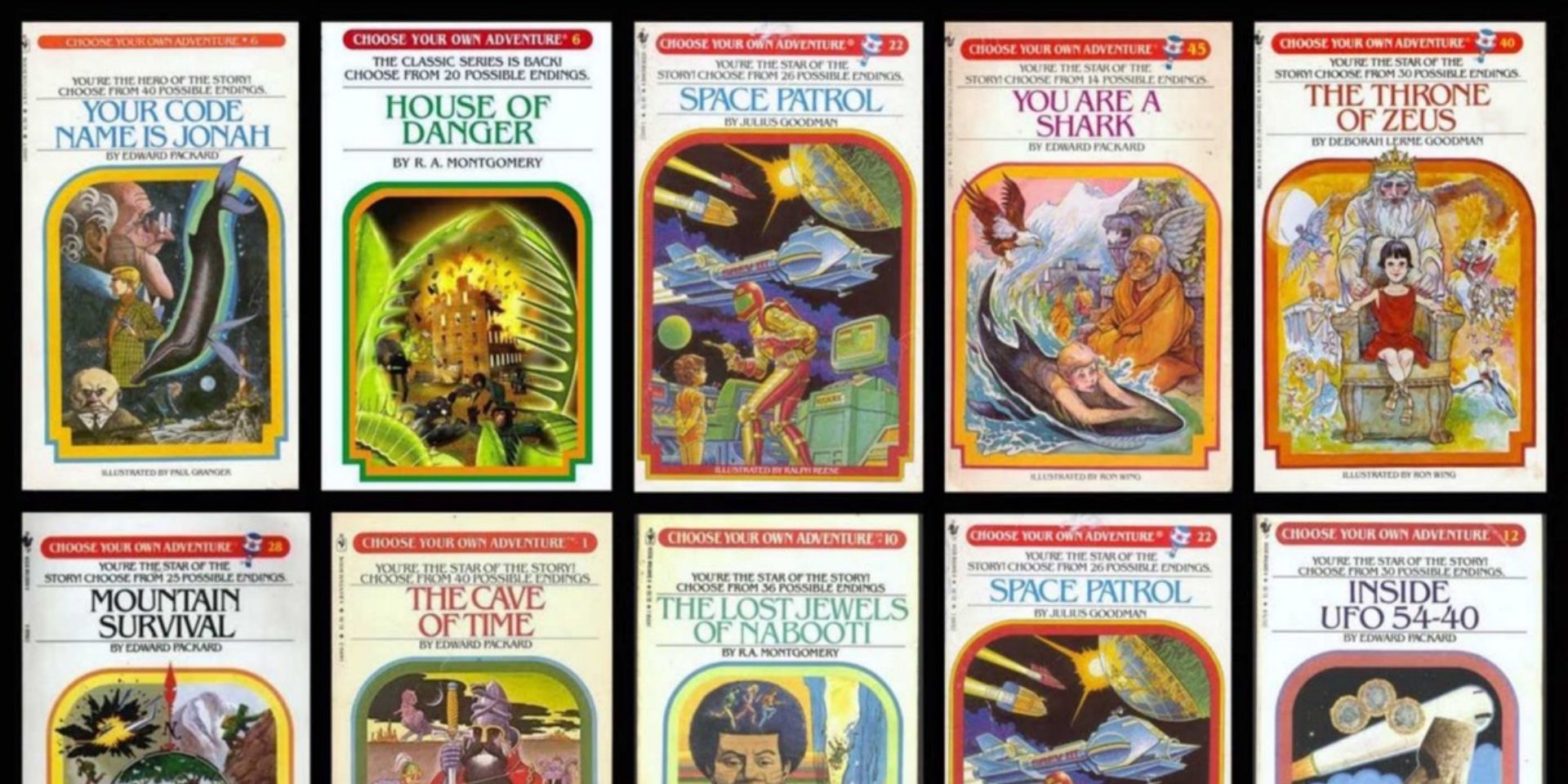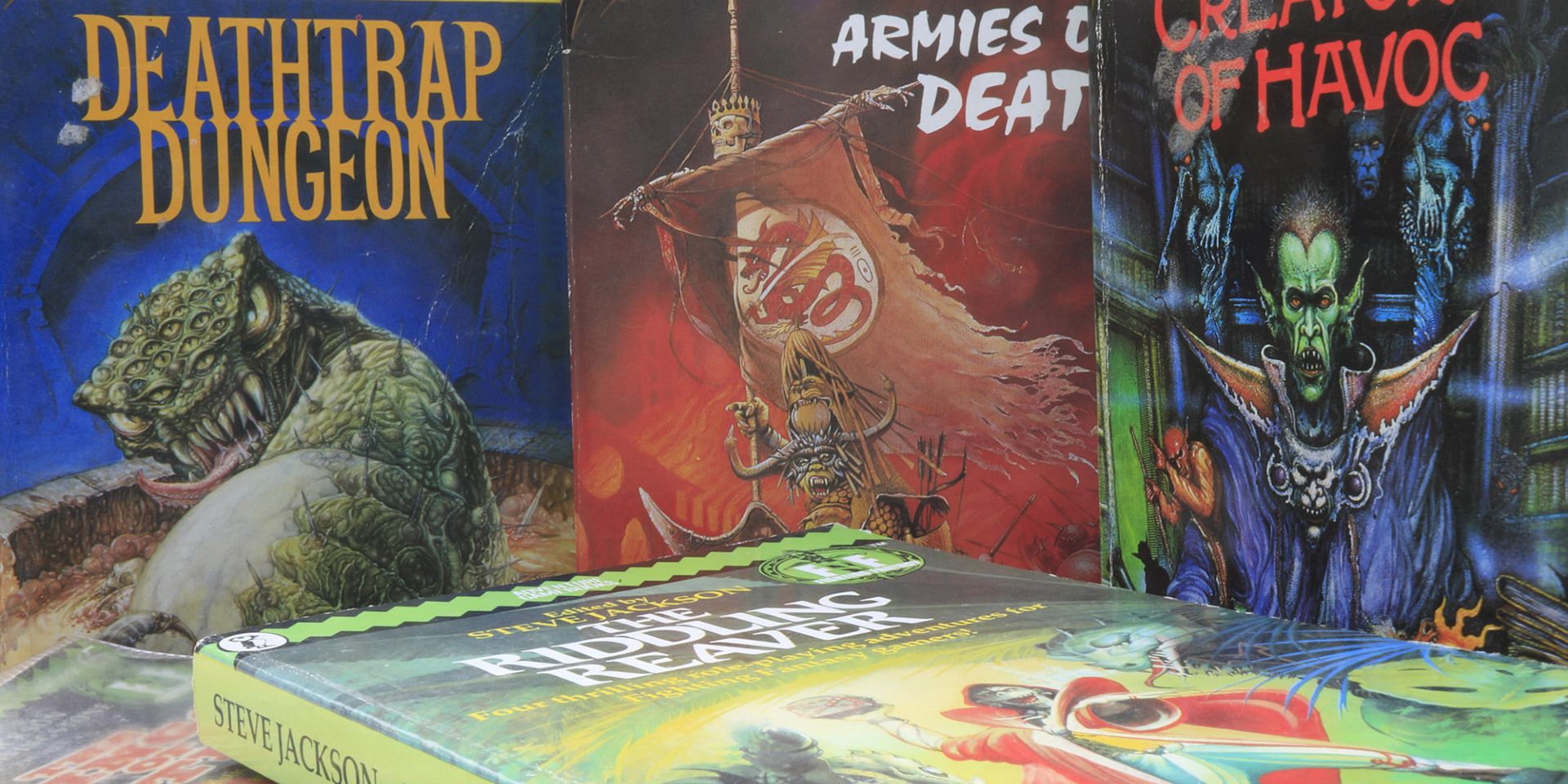Computer RPGs like Disco Elysium owe a lot to old school text adventures like Zork, classic tabletop roleplaying games such as Dungeons & Dragons, and a non-linear genre of literature called "Gamebooks," the classic example of which is the Choose Your Own Adventure series. These analog forms of interactive fiction introduced and refined many of the concepts core to modern video game storytelling – branching narrative routes based on player choice, multiple endings, and so on. Early works of interactive fiction like the Choose Your Own Adventure novellas or Steven Jackson's Fighting Fantasy gamebooks also acted as a testing ground of sorts for text adventures and similar video games, teaching game writers how to give players story choices that were meaningful and satisfying.
When computer RPGs like the Elder Scrolls games and MMOs like Ultima Online become successful franchises, there were gamers in the gaming community who speculated titles like these would drive classic tabletop roleplaying games like Dungeons & Dragons out of business. In reality, tabletop gaming as a hobby went though a renaissance around the early 2000s and 2010s thanks to a mixture of good promotion, creative new RPG products, Actual Play livestreams like Critical Role, and game developers embracing the distinct strengths of tabletop roleplaying. A Game Master with good story-writing skills and an invested table of players can improvise stories with theoretically infinite possible choices and narrative outcomes; video game stories, pre-programmed ahead of time, intrinsically have a finite number of player choices and ending scenarios (though recent games like Wildermyth have managed to bypass this technical limitation through procedural narrative generation).
Non-linear video game plots with multiple endings tend to show up more often in computer RPGs, text adventures, and visual novels – genres where interactions between characters are a core part of gameplay and sophisticated graphics aren't as vital to the game's success on the market. Video game developers and writers can only create so many narrative choices (and puzzle solutions in the case of a point-and-click adventure game like Myst) over the course of development, making it all the more vital for them to create "game routes" that are thematically distinct, fun for players, and in-character for the story's protagonists. This sort of narrative design process can be very tricky – Bioware's Mass Effect 3 RPG was criticized after launch for having endgame choices disconnected from the choices players made earlier in the game, while The Stanley Parable adventure game is a sort of meta-commentary on how many video games claim to give players freedom while simultaneously railroading the choices players make. Video games where picking and navigating a multitude of narrative paths (the D&D-inspired Disco Elysium being the weirdest and most famous example currently) illustrate the potential of video games as a storytelling medium and just how much story-rich games owe to the gamebooks of the 20th century.
Consider The Consequences, A Romance Novel & First Modern Gamebook
The first modern gamebook was a romance novel called Consider the Consequences, co-written by authors Doris Webster and Mary Alden Hopkins and published in 1930. The cover art for this book, depicting a woman standing atop a chess/checkers boards with playing pieces of her suitors, hints at both the groundbreaking game structure of the book and the love triangle central to the novel's many branching plots. According to an article at Smithsonian Magazine, readers start a play-through of Consider the Consequences by choosing between three viewpoint characters – a woman named Helen Rogers, or one of her two suitors, Jed Harringdale and Saunders Mead. Besides pioneering quintessential gamebook conventions such as telling readers to skip ahead to certain paragraph/pages, Consider the Consequences has a branching plot structure that puts many modern visual novels to shame, containing 43 different endings readers can reach depending their their choices and chosen protagonists.
Choose Your Own Adventure's Influence On Video Game Choice Mechanics
Gamebooks as a concept really took off in the 1970s with the cover art-heavy Choose Your Own Adventure series of children's books published by Bantam Books. The History of CYOA page on the Choose Your Own Adventure website expounds on how the original CYOA books were the brainchild of R.A. Montgomery and Ed Packard, who each wrote the first novels in the series. The CYOA book series swiftly grew into a highly successful franchise with a team of authors who contributed hundreds of original stories, each set in different genres such as adventure, mystery, fantasy, and science fiction. While the quality of the CYOA books and the choices they offered readers varied at times (with certain story choices leading to very abrupt and literal "dead ends") the accessible, child-friendly narrative choices and second-person "You" perspective of these novels went on to inspire the developers and dangerous modders of Mass Effect 2, along with developers of other narrative video games with dialogue trees and multiple-choice story options.
Steve Jackson's Fighting Fantasy Gamebooks Also Influenced Computer RPGs
Like the Choose Your Own Adventure books, the Fighting Fantasy gamebooks were written for young audiences, though their themes tended to be darker and they were marketed towards fans of early roleplaying games such as Dungeons & Dragons. Steve Jackson and Ian Livingstone first came up with the idea behind the Fighting Fantasy books in the 1980s, eventually co-writing a massively popular gamebook called The Warlock Of Firetop Mountain that was published by Puffin. US Gamer discusses how the full library of Fighting Fantasy gamebooks (and the Sorcery! spinoff series) combined the multiple-choice page turning of Choose Your Own Adventure with basic versions of D&D-style fantasy RPG rules, letting players over-come dangerous or reckless story scenarios with a good dice roll; effectively, the Fighting Fantasy series offered young gamers a roleplaying experience they could tackle solo.
Though increasingly sophisticated computer RPGs like Baldur's Gate started to supersede interactive gamebooks, franchises like Fighting Fantasy and Sorcery! are still reaching new audiences via video game ports and classic paperback publications. At the same time, many modern video games where combat encounters are resolved through dice-based skill checks (seen in Disco Elysium and similar homebrew RPGs) share a lot of design elements with the gamebook genre Steve Jackson and Ian Livingstone pioneered.
Sources: Smithsonian Magazine, Choose Your Own Adventure, US Gamer




